
Tiziano Vecellio Titian Painting Reproductions 10 of 10
c.1485-1576
Italian High Renaissance Painter
240 Titian Paintings

Venus Blindfolding Cupid c.1560/70
Oil Painting
$2201
$2201
Canvas Print
$74.19
$74.19
SKU: TTV-12978
Tiziano Vecellio Titian
Original Size: 122.4 x 97.3 cm
National Gallery of Art, Washington, USA
Tiziano Vecellio Titian
Original Size: 122.4 x 97.3 cm
National Gallery of Art, Washington, USA
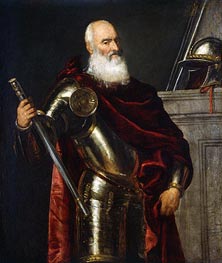
Vincenzo Cappello c.1540
Oil Painting
$1976
$1976
Canvas Print
$78.95
$78.95
SKU: TTV-12979
Tiziano Vecellio Titian
Original Size: 141 x 118.1 cm
National Gallery of Art, Washington, USA
Tiziano Vecellio Titian
Original Size: 141 x 118.1 cm
National Gallery of Art, Washington, USA

Cardinal Pietro Bembo c.1540
Oil Painting
$1747
$1747
Canvas Print
$75.55
$75.55
SKU: TTV-12980
Tiziano Vecellio Titian
Original Size: 94.5 x 76.5 cm
National Gallery of Art, Washington, USA
Tiziano Vecellio Titian
Original Size: 94.5 x 76.5 cm
National Gallery of Art, Washington, USA
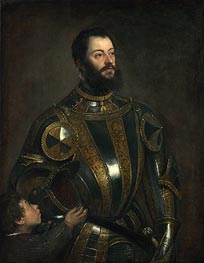
Portrait of Alfonso d'Avalos, Marchese del Vasto, ... 1533
Oil Painting
$2241
$2241
Canvas Print
$72.66
$72.66
SKU: TTV-12981
Tiziano Vecellio Titian
Original Size: 110 x 80 cm
J. Paul Getty Museum, Los Angeles, USA
Tiziano Vecellio Titian
Original Size: 110 x 80 cm
J. Paul Getty Museum, Los Angeles, USA
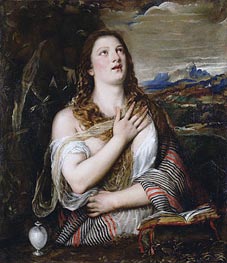
The Penitent Magdalene c.1555/65
Oil Painting
$2201
$2201
Canvas Print
$80.83
$80.83
SKU: TTV-12982
Tiziano Vecellio Titian
Original Size: 106.7 x 93 cm
J. Paul Getty Museum, Los Angeles, USA
Tiziano Vecellio Titian
Original Size: 106.7 x 93 cm
J. Paul Getty Museum, Los Angeles, USA
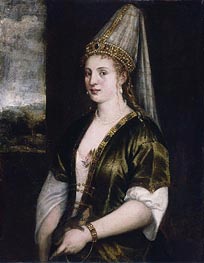
Sultana Rossa c.1550/60
Oil Painting
$2132
$2132
Canvas Print
$72.66
$72.66
SKU: TTV-12983
Tiziano Vecellio Titian
Original Size: 96.5 x 76.2 cm
John & Mable Ringling Museum of Art, Florida, USA
Tiziano Vecellio Titian
Original Size: 96.5 x 76.2 cm
John & Mable Ringling Museum of Art, Florida, USA
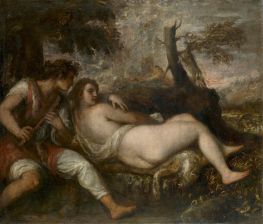
Nymph and Shepherd c.1570/75
Oil Painting
$1903
$1903
Canvas Print
$79.97
$79.97
SKU: TTV-19392
Tiziano Vecellio Titian
Original Size: 149.6 x 187 cm
Kunsthistorisches Museum, Vienna, Austria
Tiziano Vecellio Titian
Original Size: 149.6 x 187 cm
Kunsthistorisches Museum, Vienna, Austria
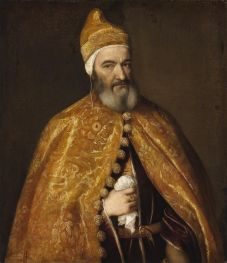
Portrait of Doge Marcantonio Trevisan c.1553/54
Oil Painting
$1597
$1597
Canvas Print
$80.83
$80.83
SKU: TTV-19393
Tiziano Vecellio Titian
Original Size: 100 x 86.5 cm
Museum of Fine Arts, Budapest, Hungary
Tiziano Vecellio Titian
Original Size: 100 x 86.5 cm
Museum of Fine Arts, Budapest, Hungary

Crowning with Thorns of Christ c.1570
Oil Painting
$2099
$2099
Canvas Print
$61.75
$61.75
SKU: TTV-19394
Tiziano Vecellio Titian
Original Size: 280 x 182 cm
Alte Pinakothek, Munich, Germany
Tiziano Vecellio Titian
Original Size: 280 x 182 cm
Alte Pinakothek, Munich, Germany

Portrait of a Young Man c.1520
Oil Painting
$1506
$1506
Canvas Print
$77.09
$77.09
SKU: TTV-19395
Tiziano Vecellio Titian
Original Size: 89.3 x 74.3 cm
Alte Pinakothek, Munich, Germany
Tiziano Vecellio Titian
Original Size: 89.3 x 74.3 cm
Alte Pinakothek, Munich, Germany
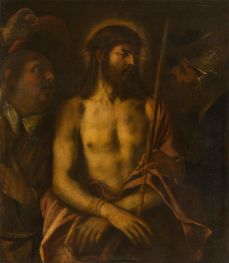
Ecce Homo n.d.
Oil Painting
$1760
$1760
Canvas Print
$81.51
$81.51
SKU: TTV-19396
Tiziano Vecellio Titian
Original Size: 101.6 x 88.7 cm
Alte Pinakothek, Munich, Germany
Tiziano Vecellio Titian
Original Size: 101.6 x 88.7 cm
Alte Pinakothek, Munich, Germany
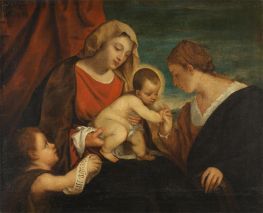
The Mystic Marriage of Saint Catherine n.d.
Oil Painting
$1894
$1894
Canvas Print
$75.89
$75.89
SKU: TTV-19397
Tiziano Vecellio Titian
Original Size: 79.7 x 96.5 cm
Alte Pinakothek, Munich, Germany
Tiziano Vecellio Titian
Original Size: 79.7 x 96.5 cm
Alte Pinakothek, Munich, Germany
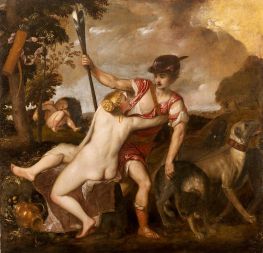
Venus and Adonis n.d.
Oil Painting
$3001
$3001
Canvas Print
$90.01
$90.01
SKU: TTV-19398
Tiziano Vecellio Titian
Original Size: 189.5 x 182.8 cm
Dulwich Picture Gallery, London, UK
Tiziano Vecellio Titian
Original Size: 189.5 x 182.8 cm
Dulwich Picture Gallery, London, UK
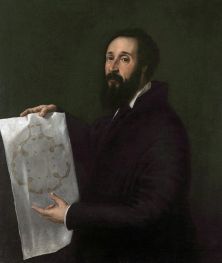
Portrait of Giulio Romano c.1536/38
Oil Painting
$1502
$1502
Canvas Print
$78.95
$78.95
SKU: TTV-19400
Tiziano Vecellio Titian
Original Size: 101 x 85 cm
Palazzo Ducale, Venice, Italy
Tiziano Vecellio Titian
Original Size: 101 x 85 cm
Palazzo Ducale, Venice, Italy
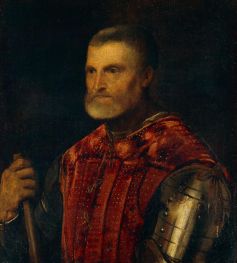
Man in Armour c.1530
Oil Painting
$989
$989
Canvas Print
$84.40
$84.40
SKU: TTV-19401
Tiziano Vecellio Titian
Original Size: 65 x 58 cm
Pinacoteca Ambrosiana, Milan, Italy
Tiziano Vecellio Titian
Original Size: 65 x 58 cm
Pinacoteca Ambrosiana, Milan, Italy
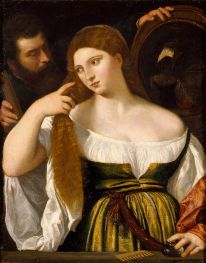
Girl Before the Mirror a.1515
Oil Painting
$1920
$1920
Canvas Print
$73.34
$73.34
SKU: TTV-19402
Tiziano Vecellio Titian
Original Size: 89 x 71 cm
Museu Nacional d'Art de Catalunya, Barcelona, Spain
Tiziano Vecellio Titian
Original Size: 89 x 71 cm
Museu Nacional d'Art de Catalunya, Barcelona, Spain

Adoration of the Magi c.1557/60
Oil Painting
$3432
$3432
Canvas Print
$61.75
$61.75
SKU: TTV-19403
Tiziano Vecellio Titian
Original Size: 223 x 120 cm
Pinacoteca Ambrosiana, Milan, Italy
Tiziano Vecellio Titian
Original Size: 223 x 120 cm
Pinacoteca Ambrosiana, Milan, Italy
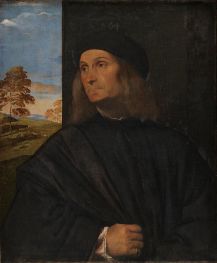
Portrait of the Venetian Painter Giovanni Bellini c.1511/12
Oil Painting
$1574
$1574
Canvas Print
$77.25
$77.25
SKU: TTV-19404
Tiziano Vecellio Titian
Original Size: 80 x 66 cm
National Gallery of Denmark, Copenhagen, Denmark
Tiziano Vecellio Titian
Original Size: 80 x 66 cm
National Gallery of Denmark, Copenhagen, Denmark
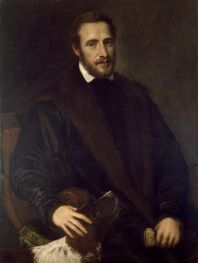
Possible Portrait of Jan van Haanen c.1540/50
Oil Painting
$1620
$1620
Canvas Print
$69.94
$69.94
SKU: TTV-19405
Tiziano Vecellio Titian
Original Size: 105.8 x 79.5 cm
Museo Soumaya, Mexico City, Mexico
Tiziano Vecellio Titian
Original Size: 105.8 x 79.5 cm
Museo Soumaya, Mexico City, Mexico
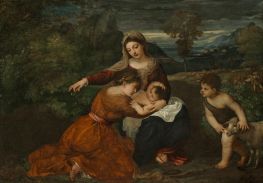
The Madonna and Child with Infant Saint John the ... 1530s
Oil Painting
$2385
$2385
Canvas Print
$65.35
$65.35
SKU: TTV-19406
Tiziano Vecellio Titian
Original Size: 105.4 x 148.3 cm
Kimbell Art Museum, Fort Worth, USA
Tiziano Vecellio Titian
Original Size: 105.4 x 148.3 cm
Kimbell Art Museum, Fort Worth, USA
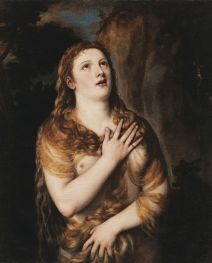
Mary Magdalene c. 1540
Oil Painting
$1931
$1931
Canvas Print
$75.38
$75.38
SKU: TTV-19407
Tiziano Vecellio Titian
Original Size: 96 x 74 cm
Pinacoteca Ambrosiana, Milan, Italy
Tiziano Vecellio Titian
Original Size: 96 x 74 cm
Pinacoteca Ambrosiana, Milan, Italy
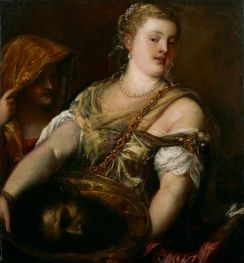
Salome with the Head of John the Baptist c.1560/70
Oil Painting
$2003
$2003
Canvas Print
$69.94
$69.94
SKU: TTV-19408
Tiziano Vecellio Titian
Original Size: 90 x 83.3 cm
National Museum of Western Art, Tokyo, Japan
Tiziano Vecellio Titian
Original Size: 90 x 83.3 cm
National Museum of Western Art, Tokyo, Japan
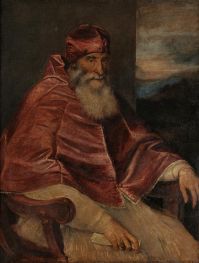
Portrait of Pope Paul III with 'Camauro' c.1545/46
Oil Painting
$1936
$1936
Canvas Print
$70.96
$70.96
SKU: TTV-19409
Tiziano Vecellio Titian
Original Size: 105 x 80.8 cm
Museo Nazionale di Capodimonte , Napoli, Italy
Tiziano Vecellio Titian
Original Size: 105 x 80.8 cm
Museo Nazionale di Capodimonte , Napoli, Italy
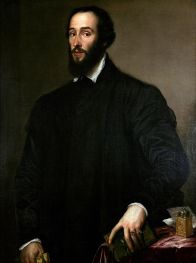
Antoine Perrenot de Granvelle 1548
Oil Painting
$1722
$1722
Canvas Print
$69.76
$69.76
SKU: TTV-19410
Tiziano Vecellio Titian
Original Size: 111.3 x 88.2 cm
Nelson-Atkins Museum of Art, Kansas City, USA
Tiziano Vecellio Titian
Original Size: 111.3 x 88.2 cm
Nelson-Atkins Museum of Art, Kansas City, USA